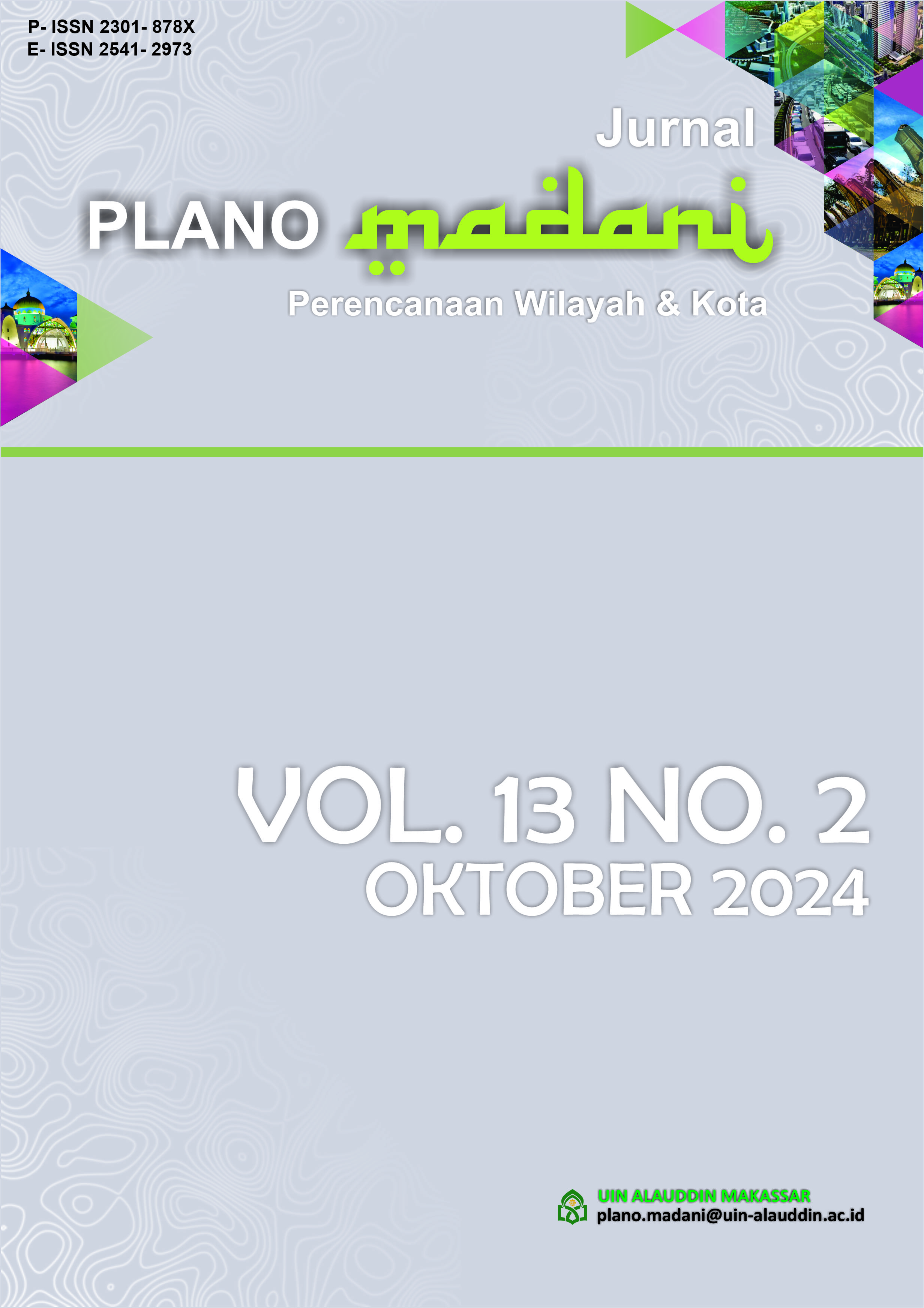IDENTIFICATION OF SUSTAINABLE COASTAL MANAGEMENT WITH A BIOPHILIC APPROACH IN TAMBAH MULYO VILLAGE, SEMARANG CITY
Abstract
Coastal areas have various threats that require intervention to increase regional resilience. Resilient coasts are the answer to multiple threats, such as flooding, regulations, maritime economics, and the existence of coastal organizations. Resilient coastal areas are not only about the area's physical condition but also the coastal regions' systematic management. One of the coastal areas in Semarang City is Tambak Mulyo. This research aims to comprehensively understand the coastal area management system and physical, regional, and organizational systems. The research data uses primary data, namely a questionnaire with a cluster sampling technique. The research method uses quantitative descriptive analysis to describe the state of management of the Tambak Mulyo coastal area. The research results show that the level of public awareness in RW XII, XIII, XIV and XV is good. People are used to floods, but not all people can adapt well. The organization only exists in RW XV but is less active. This is the case with regulations that already exist in every RW XII, XIII, XIV and XV area, but many people still need to learn the contents of these regulations.
Downloads
References
Akbar, I., Poerbo, H. W., & Soedarsono, W. K. (2019). Adaptive urban design principles for land subsidence and sea level rise in coastal area of Tambak Lorok, Semarang. In IOP Conference Series: Earth and Environmental Science (Vol. 273, p. 12005).
Astuti, M. F. K., & Handayani, W. (2020). Livelihood Vulnerability in Tambak Lorok, Semarang: an Assessment of Mixed Rural-Urban Neighborhood. Review of Regional Research, 40(2), 137–157. Retrieved from https://doi.org/10.1007/s10037-020-00142-7
Beatley, T. (2014). Planning For Resilient Coastal Communities: Emerging Practice and Future Directions. In Adapting to Climate Change (pp. 123–144). Springer. Retrieved from https://doi.org/10.1007/978-94- 017-8631-7_6
Celliers, L., Rosendo, S., Costa, M. M., Ojwang, L., Carmona, M., & Obura, D. (2020). A Capital Approach for Assessing Local Coastal Governance. Ocean & Coastal Management, 183, 104996.
Chen, T.-L., & Cheng, H.-W. (2020). Applying Traditional Knowledge to Resilience in Coastal Rural Villages. International Journal of Disaster Risk Reduction, 47, 101564.
de Alencar, N. M., Le Tissier, M., Paterson, S. K., & Newton, A. (2020). Circles of Coastal Sustainability: A Framework for Coastal Management. Sustainability, 12(12), 4886.
Joakim, E. P., Mortsch, L., Oulahen, G., Harford, D., Klein, Y., Damude, K., & Tang, K. (2016). Using System Dynamics to Model Social Vulnerability and Resilience to Coastal Hazards. International Journal of Emergency Management, 12(4), 366–391.
Kay, R., & Alder, J. (2017). Coastal Planning and Management. CRC Press.
Overbeeke, F., Shepherd, L., Canac, S., Grosskopf, A., & others. (2022). Blue Entrepreneurship Scoping Study for Kenya.
Purnomo, E. P. (2019). Management of Sustainable Coastal Areas and Small Islands Based on Collaborative Management (Case Study in Bima Regency, West Nusa Tenggara). Management.
Rudiarto, I., Handayani, W., Wijaya, H. B., & Insani, T. D. (2019). Rural Livelihood Resilience: An Assessment of Social, Economic, Environment, and Physical Dimensions. In MATEC Web of Conferences (Vol. 280, p. 1002).
Wong, A. (2019). Strategies to Advance Investments in Coastal Resilience Solutions in Boston. Massachusetts Institute of Technology.
Wulandari, I. G. A. A. M., Sudatha, I. G. W., & Simamora, A. H. (2020). Pengembangan Pembelajaran Blended Pada Mata Kuliah Ahara Yoga Semester II di IHDN Denpasar. Jurnal Edutech Undiksha, 8(1), 1–15.
Copyright (c) 2024 David Suwarno Kusweanto, Eldisya Martha Jebatu

This work is licensed under a Creative Commons Attribution-NonCommercial-ShareAlike 4.0 International License.
By Submitting your manuscript to our journal, your are following Copyright & License

